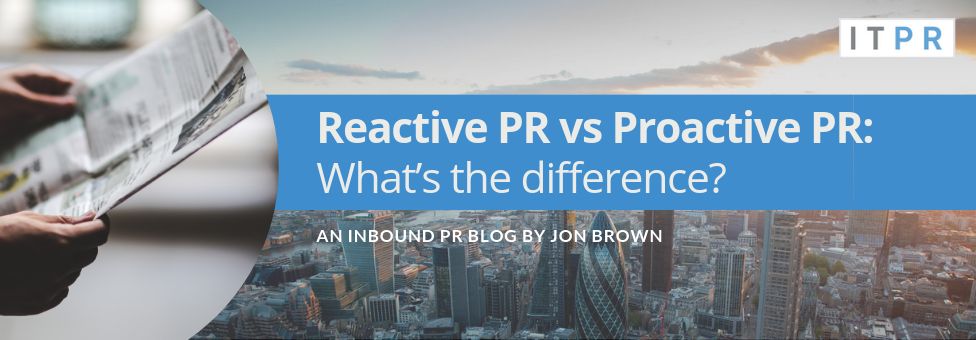
PR has changed.
Gone are the days where you’d blast out a press release to every journalist with an email address, hope for a bite and wait for them to call you back.

Successful PR now means having a proactive approach to campaigns rather than simply reacting to what’s in front of you.
Securing regular media coverage means you can no longer sit and wait for opportunities to come your way – you need to be able to get in front of the story.
But what do we mean by reactive and proactive PR? And what can you do to help secure more coverage?
PR and journalism move so quickly nowadays that it’s impossible to react to events and stories fast enough.
Crisis management is an example of being reactive, as is news hijacking, or ‘newsjacking’. Rather than trying to create the news, you wait until the news comes to you and then respond/ react accordingly.
Put it this way – would you rather be playing catch-up or leading the way?
A successful thought leadership and PR campaign means being able to shout above the crowd and show journalists the difference between your company and the hundreds of others that they deal with every day.
Done poorly, reactive PR is slow, time-consuming, resource intensive, and offers little chance of success. It’s also a serious red flag of a poor PR agency.
But done quickly (i.e. within a couple of hours) using reactive PR as a tactic can deliver results.
Moving from reactive to proactive PR requires the ability to look ahead, not behind.
It also takes the ability to strike while the iron’s hot. Wait too long and you’ll be left behind when the story has already finished.
You don’t need a crystal ball to be proactive, just a keen eye for a story and a bit of creativity. But don’t force yourself into going for every trending subject – pick the ones that are right for you and your target audience.
The best thing about proactive PR is that you don’t need a magic wand to do it. Define your objectives, find your spokesperson, outline the narrative, identify your target audience and plan how you’re going to reach them – and get creating good content.
Proactive PR gives you the opportunity to seize control of the messages that are presented to the public – creating the story rather than waiting for it.
Ask a journalist if they need help with a story they’re working on. Offer a company spokesperson as a source of information. Prepare a short comment in advance. Be proactive!
Twiddling your thumbs as you wait for a journalist to respond to your pitch is no longer a viable option. Proactively going after the opportunities that are important to your objectives is still one o the best way to get the coverage you deserve.
Need help with being more proactive? Download our eBook to learn how to write for the media and increase your coverage.
Tags: Inbound PR